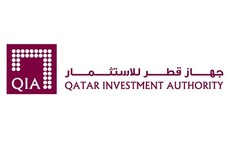
AVCJ at 25: Lewis Rutherfurd of Inter-Asia Venture Management
Lewis Rutherfurd, co-founder of Inter-Asia Venture Management, has been active in the industry for 40 years. During that time he brought McDonald’s and Ikea to Hong Kong – and set up Asian Venture Capital Journal
Asian Venture Capital Journal was supposed to be a transfer investment. A venture capital firm approaches the owner of an established brand in the US or Europe; it pitches them on launching in Asia; a joint venture is set up with the brand owner putting in the name and relevant expertise and the VC firm contributing capital and local management. If all goes well, the brand owner assumes full control after a few years, facilitating the venture capital firm's exit.
In this case, the brand owner was Venture Economics, a US-based trade journal set up in the 1960s in parallel with the emergence of venture capital as an asset class. The company's database is now part of the Thomson Reuters private equity data offering.
However, when Inter-Asia Venture Management proposed a deal to Venture Economics in the mid-1980s, it met with a cold response. "We offered to put in some money and find people to run it," recalls Lewis Rutherfurd, co-founder and managing director of Inter-Asia. "They said, ‘We're not coming to Asia, it's not interesting for venture capital. Chinese families are running the whole show, so the asset class will never work. They're won't be any subscribers, conferences or customers. And nothing to write about.'"
Big Mac incoming
Inter-Asia had already proved that the transfer model worked in Asia, albeit not for media businesses. The venture capital firm set up in Hong Kong in 1972, raised a $1 million debut fund and completed 15 investments. The first notable deal, which came two years later, was the transfer of McDonald's to Hong Kong. The fast food franchise was established in Japan and the marketing research that underpins judgments as to when new territories are ready for Big Macs was already looking further south and willing to listen to proposals from potential partners.
"It was easy to beat the likes of Swire and Jardine," Rutherfurd says. "Those guys were so incredibly arrogant and so impossibly British that no American company would even think about dealing with them. We also had a better strategy: we went in there and showed them the team they would work with."
McDonald's experienced a few teething troubles - the joint venture company had to leave its first premises when the landlord called a 300% rent hike - but the cuisine soon caught on and Inter-Asia exited its investment for a handsome return. Ikea was another transfer success story from Fund I and the VC firm continued with this approach, setting up Asia Renal Care, formed in part through a spin-off from Stanford Medical School's dialysis unit, and taking Australian sweet biscuit chain Cookie Man into China.
As for a regional venture capital publication, Inter-Asia had little option but to abandon the transfer concept and pursue the idea independently. Dick Radez was involved from the outset in an editorial capacity, and Rutherfurd approached three other Asia-focused VCs for help with funding: Victor Fung of Prudential Asia Investments, Ta-Lin Hsu of H&Q Asia Pacific, and Lip-Bu Tan of Walden International.
"The convincing argument was that we needed a trade journal, we needed a voice for the industry so we could all raise money and find out what everyone was doing," says Rutherfurd. "There were less than 20 players in the whole industry out here in Asia and we had no voice that could be construed to be independent, there were no conferences."
Asian Venture Capital Journal required about $500,000 in start-up capital plus further contributions to cover operating costs; Rutherfurd estimates the entire commitment was less than $1 million. The Journal pre-dated the first conference by no more than 12 months. They targeted 100 delegates and failed to reach that in the first two years, but within five years the 200 threshold was crossed. At the same time subscribers were signing up for the Journal and the Asian Venture Capital Directory was launched.
There were plenty of questions to answer across these platforms. Prospective institutional investors had little sense of the region, the opportunities and challenges for venture capital, the professional background of those engaged in venture investing and who was doing what. Among the early attendees were Betty Sheets of IBM Retirement Fund, Kevin Delbridge of Hancock Venture Partners [now known as HarbourVest Partners] and Betty Fagan of the Ford Foundation.
Deal flow was a key issue at the early conferences. The US LPs wanted to know how venture capital was structured in Asia, whether it followed the North American model, and how origination and negotiation were impacted by legal and regulatory considerations.
"I remember standing up and talking about transfers and people were taking notes," Rutherfurd recalls. "If you talked about transfers now, no one would come, but at the time it wasn't intrinsically obvious. Arral& Partners [co-founded by Anil Thadani] got a big hit investing in furniture. They found sourcing was a big theme in Asia - substituting manufacturing in High Point, North Carolina for Taiwan and Hong Kong. But how ridiculous is it just to be considering that now?"
Talking the talk
Having a communication channel was immensely valuable to Asia's venture pioneers, and Inter-Asia in particular. Fund I, which was raised from Chinese investors, had a relatively long life cycle - 12 years - and the carried interest was rolled back into the corpus for additional transactions. Asian Venture Capital Journal was among the first investments in Inter-Asia's second fund, a $10 million vehicle entirely backed by Royal Trust of Canada. The bank went under when its principal shareholders, the Reichmann family, overextended themselves in UK real estate and suddenly Inter-Asia was without an investor.
Rutherfurd maintains that Asian Venture Capital Journal helped him and others survive in a challenging fundraising environment. "People raised money from institutions in America and Europe maybe 3-4 years before they would have if there hadn't been a journal," he says. "It created knowledge of what people were doing out here, how they were doing it."
The exit point came around 1990. Inter-Asia and its co-investors made back their money, but the Journal was always more a service to the industry - and the investors' own fundraising needs - than a commercial exercise. None of Inter-Asia, Prudential, Walden or H&Q was particularly interested in print media as a business model.
The expectation was that Venture Economics, while wary of the Journal when it was merely an idea, would be more interested in acquiring the business once it was proven. The answer was still no. The investors were eventually introduced to Dan Schwartz, who already owned some financial titles and was interested in Asia, and he bought them out. Schwartz owned Asian Venture Capital Journal until 2006, when it was purchased by Incisive Media.
Inter-Asia is now in the process of raising its fifth fund, which has a target corpus of up to $75 million, and remains focused on venture opportunities through the region. Rutherfurd notes that, from the outset, there were several fundamental differences between the US and Asian VC models - "there wasn't much technology to invest in back then, it was better to have a larger stake, and you certainly couldn't leave the entrepreneur alone" - and some still hold true.
Inter-Asia is keen on the food and beverage, healthcare and education sectors, but steers clear of technology unless working with a partner. The view is that transfer deals are most effective when the brand owner is investing alongside the venture capital firm, and this is largely because the model relies on the transfer of expertise as well as brand name.
For example, Inter-Asia set up Asia Foods, a China-focused catering company with Compass Group, a global specialist in the field. "Institutional catering is quite high-tech and we wouldn't have done it without someone like Compass to bring us the technology and best practices," says Rutherfurd.
The perception game
What has changed is investor perceptions of early-stage investors, a by-product of Asia's obsession with pre-IPO deals and the arrival of larger private equity firms in the region. A start-up requires a relatively small amount of money and it might take eight years to arrive at a 6x return; backing a company just before it goes public may only generate a 3x return but the amount of capital deployed is larger and the period of deployment is much shorter.
As a result, Inter-Asia's LP base has migrated away from US institutions. "One of my LPs called me up and said, ‘Your returns are number one but I will never invest in you again. I give you $5 million and get $15 million back over seven years. On an IRR basis, that's top quartile. But I can give Blackstone $50 million and they'll give me back $75 million in three years. You do the math,'" Rutherfurd recalls.
"We now appear to be more interesting to family offices. They want to build relationships and find out who the entrepreneurs are and who the best person to do business with is in Hong Kong or Singapore."
And backing good entrepreneurs is still where it begins and ends for Inter-Asia. Rutherfurd recounts a conversation with a seasoned venture capitalist in Hong Kong. This investor went to China in the late 1970s and visited a battery factory staffed by young women. These workers would force zinc powder into the casings by hand, pass them on for the anode and cathode terminals and other components to be added, and then the batteries were sealed and shipped.
The investor took the company owner out for dinner that evening and tried to engage him in conversation about his family and personal background. But all the owner would talk about was batteries and production processes. The investor was transfixed and provisionally agreed to buy 50% of the company for about $500,000, but his investment committee wouldn't support a deal.
"It's now the third-largest battery company in the world," says Rutherfurd. "The investor asked the company owner what a 50% stake would be worth today and he was told ‘$300 million, maybe $500 million.' Picking entrepreneurs is very interesting. With some of them it really doesn't matter what they are doing - pens, batteries, chips, underwear - they are going to win."
Latest News
Asian GPs slow implementation of ESG policies - survey
Asia-based private equity firms are assigning more dedicated resources to environment, social, and governance (ESG) programmes, but policy changes have slowed in the past 12 months, in part due to concerns raised internally and by LPs, according to a...
Singapore fintech start-up LXA gets $10m seed round
New Enterprise Associates (NEA) has led a USD 10m seed round for Singapore’s LXA, a financial technology start-up launched by a former Asia senior executive at The Blackstone Group.
India's InCred announces $60m round, claims unicorn status
Indian non-bank lender InCred Financial Services said it has received INR 5bn (USD 60m) at a valuation of at least USD 1bn from unnamed investors including “a global private equity fund.”
Insight leads $50m round for Australia's Roller
Insight Partners has led a USD 50m round for Australia’s Roller, a venue management software provider specializing in family fun parks.







